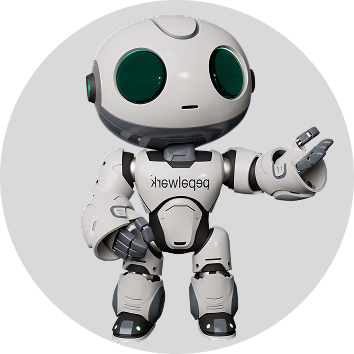Are you continually disappointed by the quality of candidates that you’re receiving from recruitment agencies? This is a common frustration that we hear from employers. How about recruitment solutions that promise the world, but don’t deliver the goods? Job boards that endlessly send you resumes are time-consuming and costly! Online recruitment shouldn’t be this difficult. The job seekers are out there and the data is available – the systems just need to leverage that data efficiently to deliver more relevant candidates for recruiters. In this blog, we look at how to recruit candidates for a job using a skills-matching platform.
What Defines Your Job Candidates?
As opposed to job applicants, job candidates are people who have been screened and are qualified in skills, attributes and experience for the job opening. They are the true contenders for the opening and are often found through recruitment rather than an application on a job board.
What is "Skills Matching" and Why is it More Effective than Other Recruitment Solutions?
There are many benefits of skills-matching technology. Skills matching is a sophisticated method of finding relevant job seekers for recruiters, based on the skills and expertise required by the employer. This skills-based job-matching approach to hiring candidates seeks to identify quality candidates rather than just quantity.
In today’s world, we have a vast amount of information at our fingertips. Search engines have become increasingly intelligent, so much so that they now incorporate voice search and AI, to deliver the most relevant results, no matter how you type (or speak) your search query.
So, why can’t we do the same for recruitment? Why aren’t we able to utilize this predictive technology effectively for finding and recruiting candidates for a job? The answer is, we can. In fact, Google launched its Google for Jobs AI-based job search tool back in 2017. It’s not an app or platform and doesn’t have a separate URL, instead, Google enhanced its capabilities for delivering more relevant results for job search queries. But this doesn’t go far enough. It’s still based on keywords and relies too heavily on the ATS (applicant tracking system) employers use to post their job openings.
Many platforms claim they use smart candidate search tools, but too often employers are still just overpaying for a high volume of candidates, a large proportion of which are unsuitable. Want to know how to recruit candidates for a job in the modern era? Keyword matching isn’t sufficient. You need to have candidate results matched to the specific skills and expertise your company needs. And this requires context.
How Does Skills-Matching Technology Work?
Intelligent skills-matching software identifies the most relevant job seekers by combining the job profile attributes and the employer’s pre-set criteria. This allows for contextual learning and verification that those requirements are met by each job seeker before they are submitted to the employer as a match.
Skills matching in the current space doesn’t go far enough. The majority of recruitment platforms don’t have the sophistication to incorporate context. They only match certain keywords and lists of skills on a resume, but the skill itself is not measured. For example, if a resume says, “Experienced in Microsoft Office”, that’s not enough information to know the competency or context, which is relevant to the employer.
Think about it from a trade skills perspective. As a candidate, you know how to drill, say, but drill for what? Carpentry? Building sites? Road maintenance? Most online recruitment solutions cannot differentiate. Skills-matching technology goes further–it learns context. And the more refined you get in defining your job profile, the better results you get. So, the traditional resume methodology should be consigned to history.
It’s time to start matching job profiles with relevant talent profiles. Simple. This is how to recruit candidates for a job in a streamlined way. No more wasting time trawling through piles of unsuitable resumes. Employers need a more refined system with an integrated filtering process for hiring.
Why Skills Matching is the Future of the Recruitment Experience
Most online job application systems today involve a process with a lot of different steps. Too many. And employers often don’t think about the user experience for the people they want to attract to their company. And that’s a big mistake. If you’re a big company, perhaps you don’t care, because you’ve got so many candidates to pick from anyway. But that’s not how the majority of the economy wants to operate.
A Future Workplace study found that around 60% of job seekers report having had a poor candidate experience, and 72% of those candidates went on to share their experience in an online forum or review site.
So, as an employer, you should be thinking, “how can I create the best experience for the candidates I want to attract?” If all you know is this traditional resume review and going through all the old-school steps, you’ve already made a big disconnect. Skills-matching technology offers a better experience and that’s why it’s the future of recruiting.
An Excellent Candidate Experience is Good for Your Brand
Employers need to learn how to recruit candidates for a job who embody their brand culture, as well as have the required expertise. If you use a process that allows job seekers to create their own persona and outline their attributes and values, you’ll be able to see how candidates would fit into your working environment.
If the system enables employers to do the same, i.e. create culture-led job profiles, where you can showcase your company culture and brand values, then candidates will know what to expect from your organization. Skills-matching technology ensures candidates meet the required skills criteria, while the profile-based experience aligns with culture and brand.
Two trends emerging as key priorities for recruiters are:
- Defining the employer brand and communicating this to job seekers
- Delivering an experience that relates to the next generation of job seekers
Millennials and Gen Z’ers are after a streamlined job search and application process. They’ll switch off fast and disengage with your company if the experience is poor or if you don’t communicate your brand culture effectively. 80% is the typical drop-off rate during an application process, according to Glassdoor.
Learn more about hiring for these generations in our recent blog: How to Recruit Millennials and Gen Z.
How to Recruit Candidates for Jobs That are Right for Your Business
1. Gain an accurate perception of the candidate’s expertise.
To identify the right fit for your job opening, you need to ensure the candidate has the aptitude along with the specific skills required for the role. In addition, it is vital that you have an accurate perception of the candidate’s expertise.
2. Identify the skills and aptitudes needed for success.
Why is the aptitude for a skill just as important as the expertise? Because some people have a way of communicating that they know their stuff. An employer could have the same conversation with two different candidates, ticking all the boxes (in terms of specific skills and experience), but how you perceive this expertise will be totally different – even if the skillset is the same. Both candidates claim to have the skills you want, but who you ultimately hire depends on how well they presented themselves and talked about their experience.
3. Let go of the resumes.
This disconnect led to the dysfunction (and downfall) of the resume process. How you define an expert in a function, role or industry may not be how I define one. And, a candidate–even an honest one–might not possess the aptitude to be successful in the dynamic way that they think. In the worst cases, they’re just trying to sell themselves as someone with that expertise. In either case, the employer’s perception is different.
4. Utilize skills matching.
We at pepelwerk invite you to ditch the resume application formula in favor of skills matching. This stops people from cheating their way into your candidate pool and helps you avoid candidates with skills or experience gaps.
5. Use the right modern recruitment platforms.
Modern recruitment platforms should offer a streamlined application process and user experience. They should help employers tell their brand story effectively while offering skills tests for different attributes and skill levels. Skills assessments allow recruiters to determine whether the candidate really has the right level of proficiency in the skills required for the job. Candidates can’t oversell you. A more diligent screening process at the front end reduces time-to-hire and helps avoid investing resources in the wrong candidates.
When it comes to learning how to recruit candidates who are qualified, relevant, and suitable for your company, pepelwerk can support you.
Summary: Modernize Your Hiring Approach
Modern employers don’t want a time-consuming hiring process. Right now, they pay large sums of money to third parties for solutions that should be reducing the recruitment grind. (But, they only add to and reinforce it.) And today’s job seekers want a quick and easy way to get matched with relevant job opportunities.
With pepelwerk, we wanted to transform how we approach the working world and give employers a more refined way to find the job seekers of the future and provide job seekers with a seamless user experience. That’s how to recruit candidates for a job in the digital era.
Pepelwerk is a sophisticated skills-matching platform, which uses 16 points of criteria to identify high-quality candidate matches for your job openings. Our all-in-one recruitment and HR platform helps you build culture-led job profiles and manage your candidate matches in a streamlined way, saving you time and money.









